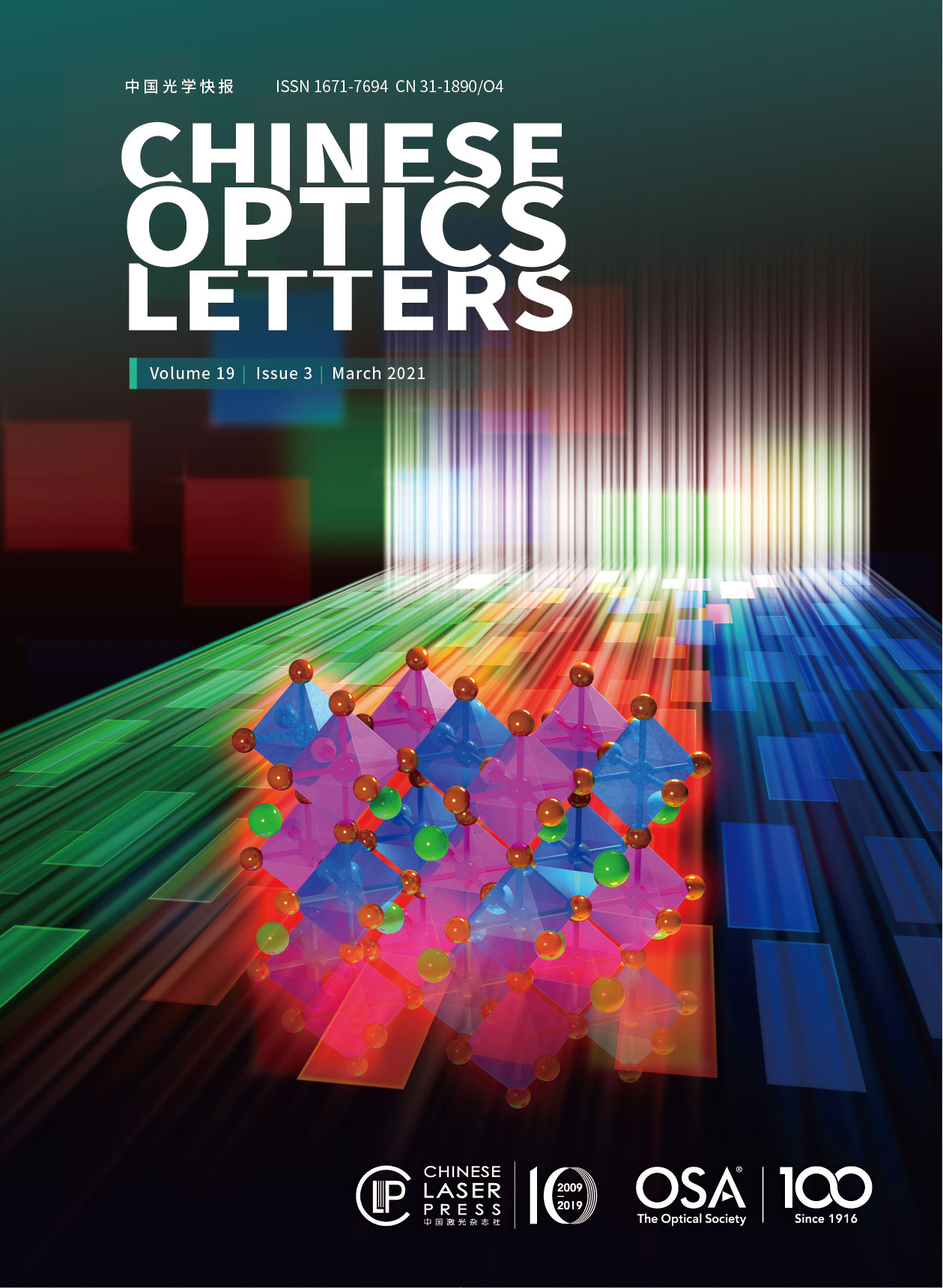- Special Issue
- Metal Halide Perovskite and Their Applications
- 5 Article (s)
- Publication Date: Mar. 10, 2021
- Vol. 19, Issue 3, 030001 (2021)
- Publication Date: Mar. 10, 2021
- Vol. 19, Issue 3, 030002 (2021)
- Publication Date: Mar. 10, 2021
- Vol. 19, Issue 3, 030003 (2021)
- Publication Date: Mar. 10, 2021
- Vol. 19, Issue 3, 030004 (2021)
- Publication Date: Mar. 10, 2021
- Vol. 19, Issue 3, 030005 (2021)
Chinese Optics Letters (COL) invites original articles for a Special Issue on Metal Halide perovskite and Their Applications to be published in March 2021. Within the last ten years, metal halide perovskites have excited the photovoltaic research community owing to their superior optical and electrical properties, ease of fabrication, low processing cost, and ease of bandgap tuning. In addition, they also hold great promise for optoelectronic and photonic applications, such as light-emitting diodes, photodetectors and lasers. Although a significant amount of research on metal halide perovskites has been conducted during the last few years, plenty of challenges to be addressed and opportunities to bring laboratory research to real-world devices lie ahead of researchers. For instance, 1) advance synthetic methodology with controllable compositions, dimensionality, morphologies and orientations; 2) establish and advance technology and instrumentation to study fundamental structural-properties as well as the light-matter interactions inside; and 3) develop integrated optoelectronic and photonic devices based on perovskites and to feed this knowledge back into the virtuous cycle of design, synthesis, measurement and application. In these regards, the scope of this special focus, covers all aspects of recent theoretical and experimental research related to metal halide perovskites.









